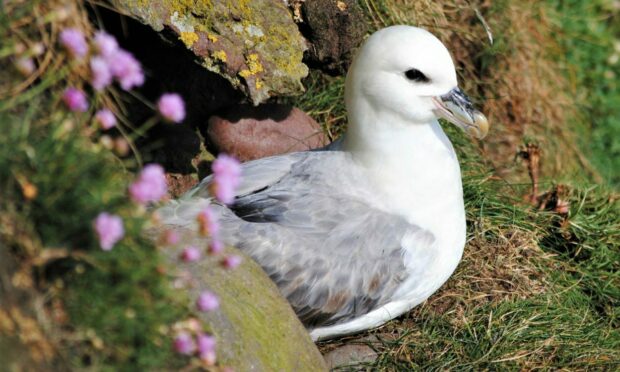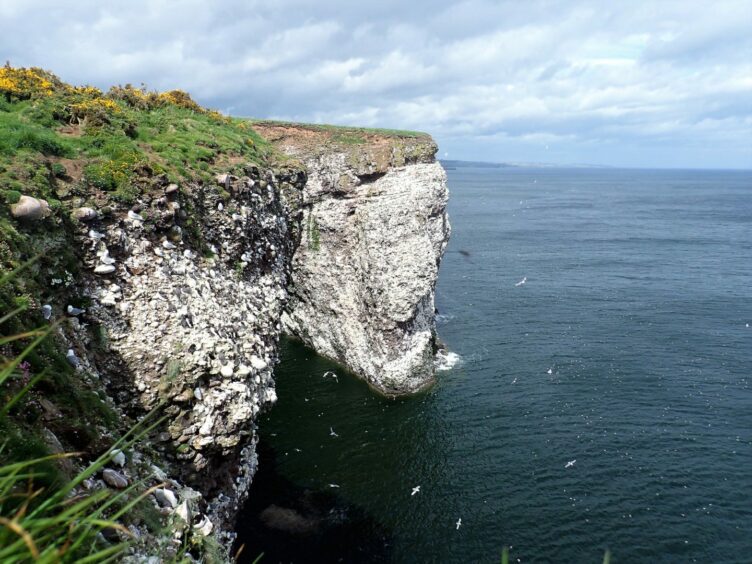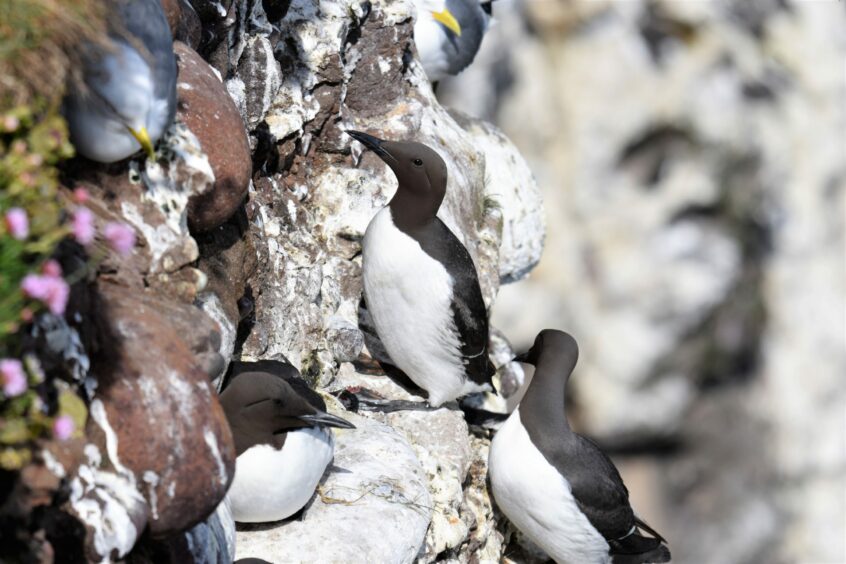I adore the magnificent cliffs at Fowlsheugh near Stonehaven, a haven for the wild spirits of the ocean where the sheer cacophony of noise and swirling excitement of the seabirds leaves one awed and exalted in equal measure.
Tens of thousands of guillemots, razorbills, kittiwakes and other seabirds nest here, a pulsating mass of frenetic life.
Every dark bird dot on the cliff ledges represents a unique individual, each one with their own remarkable stories to tell – of survival and long oceanic wanderings, and near brushes with death.
Before my spellbound eyes lay a coming together, a once-a-year opportunity for seabirds to socialise with their own kind, and they were clearly revelling in this joyous reunion.
What does Fowlsheugh mean?
Fowlsheugh means ‘bird cliff’.
It is one of the largest and most spectacular seabird colonies on mainland Britain.
Three kilometres of red sandstone cliffs rise to over 60 metres, with weathering having created crevices and ledges, which are ideal nesting sites for seabirds.
The pink blooms of thrift and red campion sparkle along the clifftops and linnets bound along the edges of encroaching fields.
As ever, on my first arrival at this RSPB reserve, it was hard to decide where to look, such was the abundance of activity from every side.
A constant stream of kittiwakes swooped low over the clifftops and throngs of guillemots and razorbill clung tenaciously to impossibly narrow rock ledges.
Absorbing to watch
Guillemots and razorbills are absorbing to watch, especially in early spring, when they first gather on cliff ledges or on the sea.
They skid along the sea surface and there is much diving and chasing underwater.
They also wheel in the air before swooping down to the sea like fearless daredevils.
Fulmars were incubating eggs on some of the grassier, broader ledges near the clifftops.
Although the fulmar looks like a gull, it is in fact a petrel and is related to the albatross.
Another characteristic of the fulmar is its stiff-winged gliding flight.
Fulmars like nothing better than to wheel in the air currents with hardly a beat of the wings.
Fulmars feed on a variety of oceanic foods ranging from zooplankton to offal and discards from commercial fishing vessels, although such discards are now on the decline due to changes in fisheries management in recent years.
Great wanderers
Fulmars are great wanderers, spreading their wings far and wide in their quest for the ocean’s riches.
As with other seabirds, fulmars face great challenges: climate change impacting upon food availability and the ever-present threat of inadvertently ingesting marine plastic.
Fulmars can live up to 40 years and any impact such environmental factors may have on their numbers could take time to detect.
My impression, however, on this visit was that there were fewer fulmars at Fowlsheugh than a decade ago.
Fowlsheugh and its bustling birdlife is a tangible indicator of the importance of our seas.
It reminds us of the need for eradicating pollution and ensuring the ocean is looked after. The sea is everything in our environment, the driving force that supports so much else.













Conversation